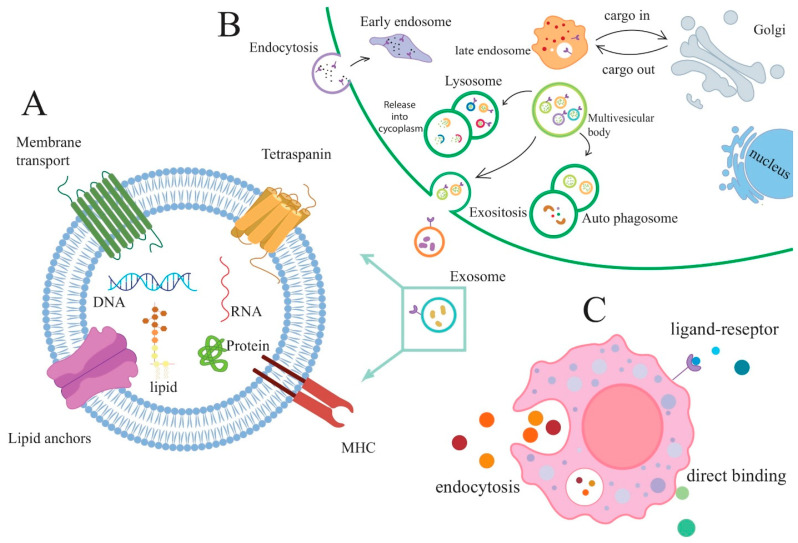Figure 1.
(A) Exosomes package their cargo in intraluminal vesicles (ILVs), which contain RNA, lipids, proteins, and receptors. (B) The biogenesis of exosomes starts with endosomal configuration. By depression and endocytosis of the plasma membrane, extracellular material enters the cytoplasm, fuses with early endosomes, the endoplasmic reticulum, and performed Golgi bodies, and produces late endosomes, or MVBs. Two different fates will be assigned to the generated MVBs. MVB contains intraluminal vesicles that are degraded by the lysosome in some instances. As an alternative, MVBs, called exosomes, travel to the cell’s surface and evacuate intraluminal vesicles of their content. (C) An exosome can attach to receptors on the surface of target cells, bind to endocytosis, or directly bind to recipient cells.

